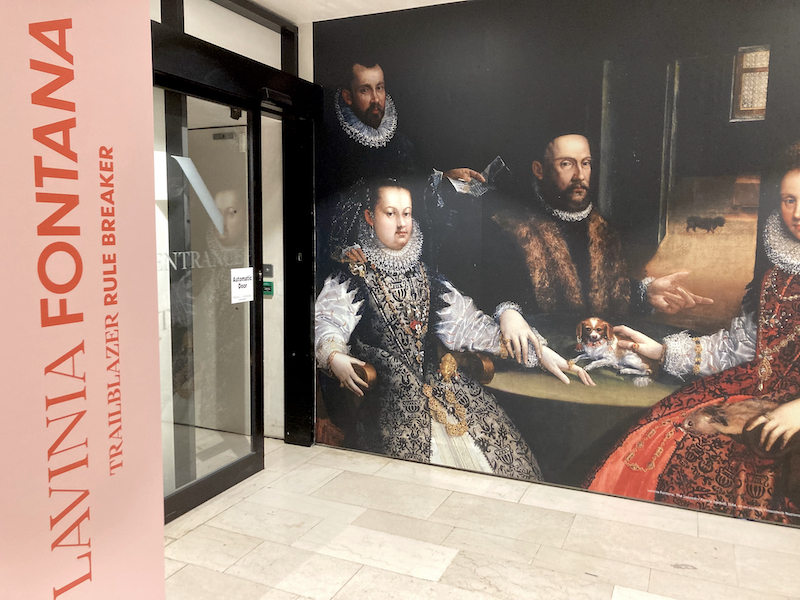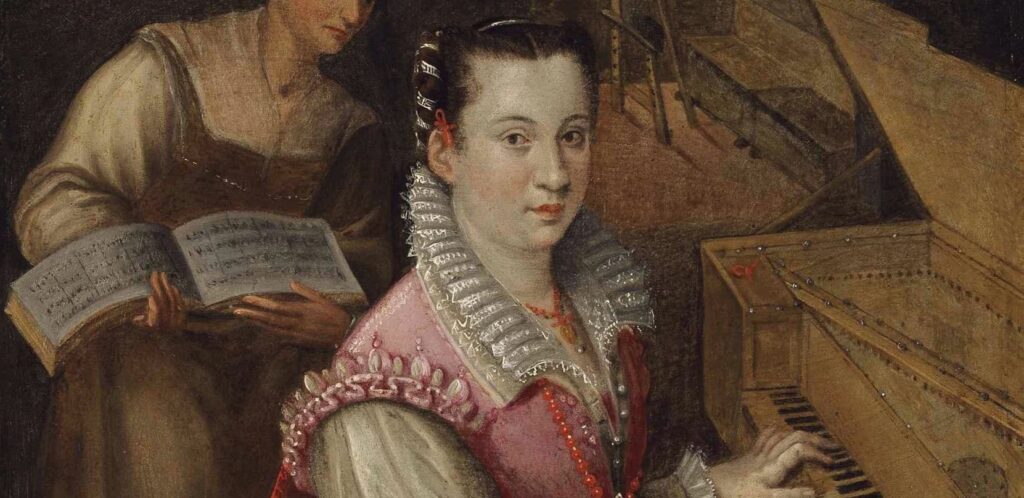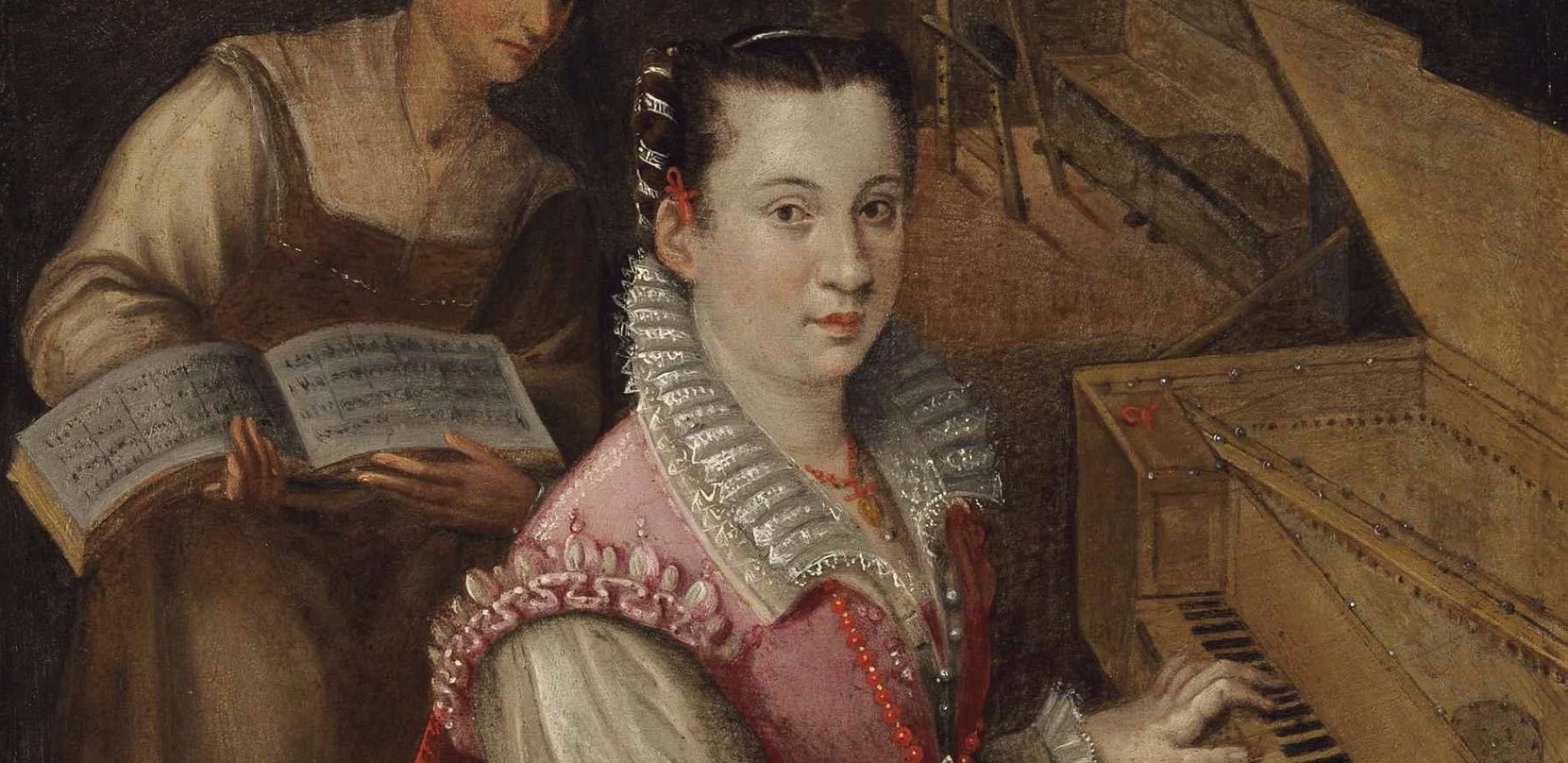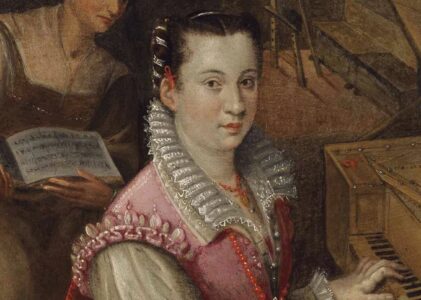Partway through my visit to the “Lavinia Fontana: Trailblazer, Rule Breaker” exhibition, I realised that I couldn’t remember ever having walked through room after room in an art gallery and been surrounded by nothing other than women’s paintings—not there in the National Gallery of Ireland and not anywhere else. There was something both arresting and sad for me in that realisation: to think about all of the women who never got to make art, or whose creations today are attributed only to ‘anonymous’, or whose works are overlooked.

Whatever else you might say about the paintings of Lavinia Fontana (1552-1614), they are not easy to ignore. There are several large-scale paintings of hers in the NGI’s exhibition which instantly draw the eye: the Gozzadini Family portrait, which takes on an extra frisson once you read the accompanying label and know it for a record of familial rancour and betrayal; the arresting Child in a Cradle, perhaps a posthumous memorialisation of a beloved child dead in infancy; the Visit of the Queen of Sheba to King Solomon, with the biblical figures attended by a gorgeously attired group of courtiers. (This last is part of NGI’s permanent collection and has recently undergone major conservation.)
In these works and others, Fontana clearly relishes showing her subjects’ status and relationships. These were people who dressed for success, and Fontana excelled in reproducing the intricacies of lace and capturing the sheen and texture of luxury fabrics, the kinds of textiles whose production and use was still so closely associated with with women during this period. True, her portraits are sometimes stiff and flat and there are occasions when her grasp of anatomy is wobbly—but despite this they are often marvellously arresting.
And Fontana herself has a life story every bit as arresting as her paintings. She was born into an artistic family in the Italian city of Bologna, then a thriving hub of trade which offered slightly more educational opportunities to women than were available in most other places in the region at that time. Fontana’s father, Prospero, was reasonably successful as a painter and had received papal commissions. He provided Fontana with her earliest training and arranged for her marriage to Gian Paolo Zappi, a minor painter in his own right. While in some respects Fontana’s marriage was a conventional one for its time—she gave birth to eleven children—in others it was less so. Zappi agreed to marry Fontana without a dowry and to let her continue her work after their wedding. Indeed, he later became her agent.
None of this is to say that Fontana was free to operate entirely as she wished. There were certainly gendered restrictions on her artistic life: as with other women, she couldn’t draw from live nude models or undertake an apprenticeship outside of her family’s workshop. But she built a solid career for herself, becoming successful enough to be commissioned not only by aristocratic families in Bologna, but also by Roman cardinals and even Spanish royalty. She was clearly embedded in the lives of Bologna’s elite families: she captured them in her portraits, and they in turn stood as godparents to her numerous children.

Fontana is also attributed with a number of firsts: her “Minerva Dressing” is the first female nude known by an Italian woman artist, she was the first woman admitted to the prestigious Accademia di San Luca in Rome, and so on. The NGI’s Director has said that in putting on this exhibition, “[w]e don’t want to be seeing Lavinia Fontana as a prodigy artist: we want to be looking at her as a painter on her own terms. Her gender is obviously very significant but primarily she is an extraordinary, talented painter, and draughtswoman as well.”
But it did seem to me as if the emphases in the exhibition were generally on Fontana as first woman in ways that felt unresolved. In relation to it, I’ve seen her variously referred to as “the first female commercial artist in the western world“, “the first woman painter”, the “first woman professional artist”, the first woman to have her own workshop. This gave me pause. Firstly, because I’m not sure at least some of these “firsts” stand. In the mid-fourteenth century, for instance, Jeanne de Montbaston was a successful commercial manuscript illuminator and guild member in Paris—I would class that as having an artistic career, although granted she co-owned her workshop with her husband, Richard. Closer to Fontana was Properzia de’ Rossi (ca. 1490-1530), a sculptor whose work once adorned the cathedral at Bologna and who had a dramatic private life.
There are assumptions about women’s history embedded in the conversation about “women’s firsts” which I think often hinders as much as it helps. As Josey Parker has asked in her discussion of the fifteenth-century Veronese humanist scholar, Isotta Nogarola, “does our focus on patriarchal oppression obscure and downplay the very real achievements” of women like Nogarola and Lavinia Fontana?
There needed to be more definition of terms in the exhibition’s discussion of Fontana: what do we mean by artist? By professional? By “own workshop”? And then once those terms are defined, to ask why this matters. Why does it matter if Fontana was the “first woman artist to achieve professional success beyond the confines of a court or a convent”? The exhibition didn’t seem interested in grappling with these questions, which I think is a shame because it might have helped it to better support the claims made by its subtitle.
Because when it came to that subtitle—“Trailblazer, Rule Breaker”—I’m not sure either the paintings or the accompanying artefacts about Fontana’s life quite convinced me on. Did she have much of a legacy or an impact on artists who came after her? Whom did she inspire? Did she break rules? What she did was societally unusual, yes, but still within the bounds that allowed her to work for respectable aristocratic matrons. She was hardly living a Bohemian lifestyle, and what was unusual about her marriage, for instance, seems to have been arranged for her by her father.
But perhaps this exhibition will itself blaze a trail that will encourage more scholars to grapple with such questions about Fontana and the women artists who came before and after her.
“Lavinia Fontana: Trailblazer, Rule Breaker” runs through to August 27 at the Beit Wing of the National Gallery of Ireland, Dublin

